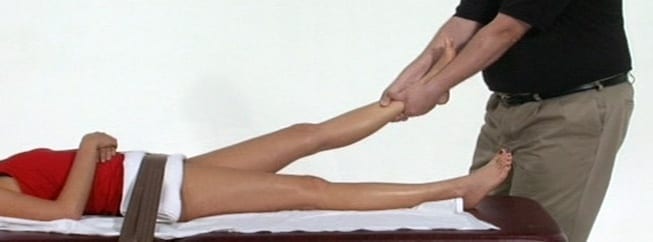Loubert PV, Zippe JT, Klobucher MJ, Marquardt ED, Opolka MJ. J Ortho Sports Phys Ther. 2013;43:534-540. Abstract by John Hoops PT, COMT. Saint Paul, Minnesota.
The authors defined the primary objective of joint mobilization as restoring the necessary accessory motions essential for normal arthokinematic and osteokinematic movement of a joint. These accessory motions are usually translational glides, for example an inferior glide of the humeral head on the glenoid to improve shoulder abduction. They also theorize that the amount of accessory translational glide available in any joint is inversely proportional to the degree of congruence and the depth of the concavity of the joint surfaces. The hip joint has a high degree of congruency and a deep joint socket, so the amount of accessory gliding in the joint should be quite small. The hip joint’s congruence is demonstrated by the nearly 180 degree arc of the acetabulum, and the close contact between the femoral head and the entire lunate surface of the acetabulum. In contrast the shoulder joint is much less congruent with a small shallow socket and a small amount of contact between the humeral head and the glenoid in any one position of the shoulder.
The authors set out to test their hypothesis during posterior gliding mobilizations of the hip joint in young, asymptomatic adults. Twenty college age students made up the convenience sample. Mobilizations were performed by one therapist with 25 years of experience. Mobilizations were performed with the hip in a loose packed position (30 degrees flexion, 30 degrees abduction, neutral rotation). The force of the mobilization was measured with a force transducer.
The results confirmed the hypothesis. The mean translational glide was 2.0 mm with a range of 0.8 to 4.2 mm. There was no correlation between the amount of force used and the amount of translation of the femoral head.
The authors recommend that joint mobilization to the hip may be more beneficial if applied at the end of the range of motion available. Additionally, the use of tangential glides or mobilizations applied during active or passive motion of the joint may be more effective in a joint of such high congruence.
IAOM-US COMMENT:
This article supports what the IAOM teaches in our manual therapy course for the hip. We agree with the authors recommendations; in addition we advocate the use of distraction in the hip joint. Distraction mobilizations are not designed to restore normal accessory motion, rather they are useful ways to stretch stiff capsular structures in a joint friendly manner. By pre-positioning the hip near its limit of motion, and then applying a distraction force, improvements in passive and active motion can be achieved. In our course on the hip we teach both tangential glides or mobilizations with movement and several different distraction procedures to improve hip mobility. Joint distraction can also be useful for pain relief as well.

